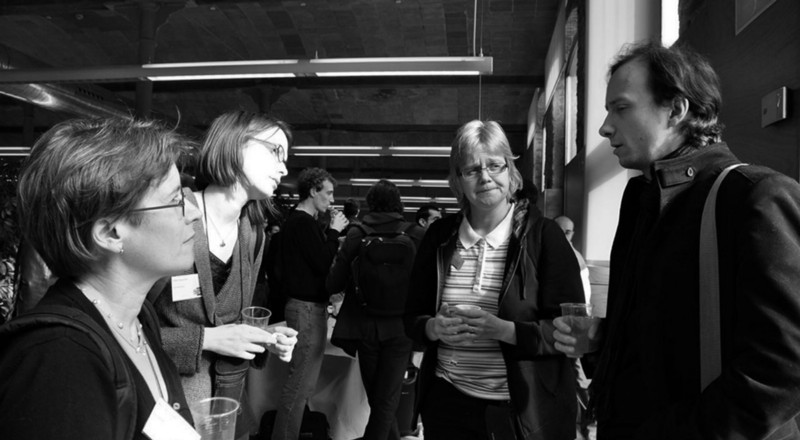How to learn English, doing UX: the history of the Brazilian designer

From the translator: this text was written by a UX designer from Brazil. In the process of mastering a new profession for him, the author managed to learn English almost from scratch. Actually, the post itself is an excellent example of if not a new teaching method, then a way of combining work and study.
A little about me: I was born and raised in Sao Paulo, Brazil, where I lived for more than 20 years. In Brazil we speak Portuguese, every day, anywhere. Less than 3% of Brazilians speak English fluently.
')
English lessons are mandatory for all secondary school students, but for a number of reasons, including not the best educational system and the inability to communicate in English regularly, we cannot learn it well enough. We think that we learn, but this is not quite so. Education standards are so low that even a successful student of a school with in-depth study of the language, getting into the English-speaking environment, quickly realizes that he knows practically nothing.

We all listen to American songs on the radio and watch Hollywood movies (dubbed on TV, with subtitles in cinemas). But if you have a bad grammar and poor vocabulary, then the English language turns into background noise.
And then you get a designer job at UX.
Normally se tem como basel aniquilação de alguns requisitos como usos de cores e imagens reais, utilizando se se somente blocos parasaros es esços e tipos de conteúdo. Quanto mais detalhada a informação, melhor a interpretação do especialista. Wireframes também podem servir como guia para que os desenvolvedores saibam o posicionamento correto dos objetos.
Above is a paragraph in Portuguese from an article about the role of the “framework” in the design of interfaces. I’m sure you can find a few familiar words even if you don’t know the language. In addition, there are good chances that, reading this article, you already know why you need frames.
But what if the study of such texts is the only way to get information on the desired topic, which you still understand very badly?
In 2005, when I started working on UX in a Brazilian company, the amount of useful information on the Portuguese-language design topic was close to zero. All the resources about which the older comrades told me where it was possible to gather useful information were in English.

For me, these sites looked something like what you see in the image above. The difficulty was that the deeper the author immersed himself in the analysis of the topic I needed, the more technical terms were there and the more difficult it was for a non-native speaker to understand what was written.
Poor knowledge of English began to interfere with work. And I realized that I just have to change this situation.
We develop the habit of reading
The best way to solve a problem is to start solving it. In reality, there are simply no other ways. Google Reader was my best assistant during the whole process, I decided to read strictly from 8 to 9 am daily. It was one of the key factors in solving the problem of not knowing the language.

Every morning I spent at least one hour reading all the feeds that I chose as relevant: UX, technology, advertising, art, and ... memes.
I had to immerse myself in a new language, so it was necessary to choose other topics, not just UX.
The morning of any Saturday was not easy in the morning: I spent three hours repeating everything I read during the week. In addition, I already read what I read, in Brazilian, on a UX-design blog. Yes, in the process of learning I decided to create a blog. Writing articles was one of the elements of the puzzle.
When you begin to retell what you read in your own language, with words you can play with, you become fully aware of what you read and understand what you want to convey to your own reader.
I think that my blog helped other designers from Brazil, those of them who were not strong in English.
Understanding expressions
“... and run a ballpark estimate to avoid surprises later on ...”
“... every morning ...”
“... make sure you cover all the bases in the design process ...”
“… Be able to handle curveballs right off the bat ...”
Not just single words were important. If you were born in a country where football is your favorite sport, then expressions like the ones mentioned above can be disorienting.
This is what I call “baseball english”. After a couple of years spent in the American environment, you begin to understand, appreciate and respect all these expressions.

The facts are that cultural characteristics greatly influence what we write more than you might think. The overwhelming number of UX design articles I could find were written by authors born and raised in the USA. The influence of American culture on these materials was very strong, many terms appeared under the influence of American books, films, music, military affairs, history.
Copy, open new tab, quotation mark, paste, quotation mark, enter.
Every time I met a new expression that was unfamiliar to me, I would stop reading and start googling. Only after I understood its meaning, I continued reading.
Studying the UX was not as linear as I thought. At the same time, it was much more fun than just reading about the frames.
In the end, you begin to understand the people who wrote the articles you read.
Work on pronunciation and intonation
Reading English texts was only the first and probably the easiest step. But there are other content: conversations, podcasts, interviews and YouTube. What about listening and speaking in a new language?
Thanks to video and audio content, I was able to get full access to information about the subject of interest to me, and this is much more data than those that can be found in these long articles. New intriguing world has opened for me.
Studying conference recordings and UX events has played a decisive role in learning a language, including the ability to speak and understand others. For example, how do you say “ecosystem”? What is the intonation and pronunciation of specialists discussing a technical question from the world of design?
I started with subtitled videos. I watched the video, paused it in the right place, repeated it after the speaker, watched it again, stopped it and spoke - until my pronunciation was correct: the pronunciation of words, the pause between sentences, articulation, change of intonation during the conversation.
The specialists, whose speeches I watched and listened to, helped me learn both English and UX. I can't even express my gratitude to all of them for that.
Meeting with native speakers

UX conferences and meetings are not just a great opportunity to talk with colleagues, it is also a way to establish a reliable connection with very talented people with professional and cultural “baggage”, and very big ones.
As soon as I began to feel more confident in conversations in English, I began to travel to UX conferences in other countries. The networking experience that I received in the early years of my career has greatly influenced my behavior there. I felt confident enough to have useful conversations with designers from all over the world — at conferences, via video calling, online chat rooms and forums.
So studying UX gave me double benefit.
You will never stop learning English
A few years later I received an offer from an American company and began working in the USA. The process of moving to a new country, cultural and business features were very interesting. Everything went smoothly due to the fact that in the first years of my career I was already immersed in the English-speaking environment.
The truth is that you will never stop learning English. And now at least twice a week I have the feeling that English is not my native one. It may sound like a stamp, but the best way to gain confidence when learning a language is to continue to be curious.
Feel free to ask questions.
If you do not know how to pronounce this or that word, find out. Joke, laugh over your accent. Break the ice. Do not pretend that you are a native speaker - this is very important.
Enthusiasm
The same applies to professional skills, and the chosen field for work. Whether you are learning a language, learning a new prototyping tool, immersing yourself in a new culture, or just trying to understand your users - the whole thing is to find common ground between your short-term goals, long-term goals and your own hobbies.
In my case, added more organization and perseverance.

Source: https://habr.com/ru/post/364255/
All Articles